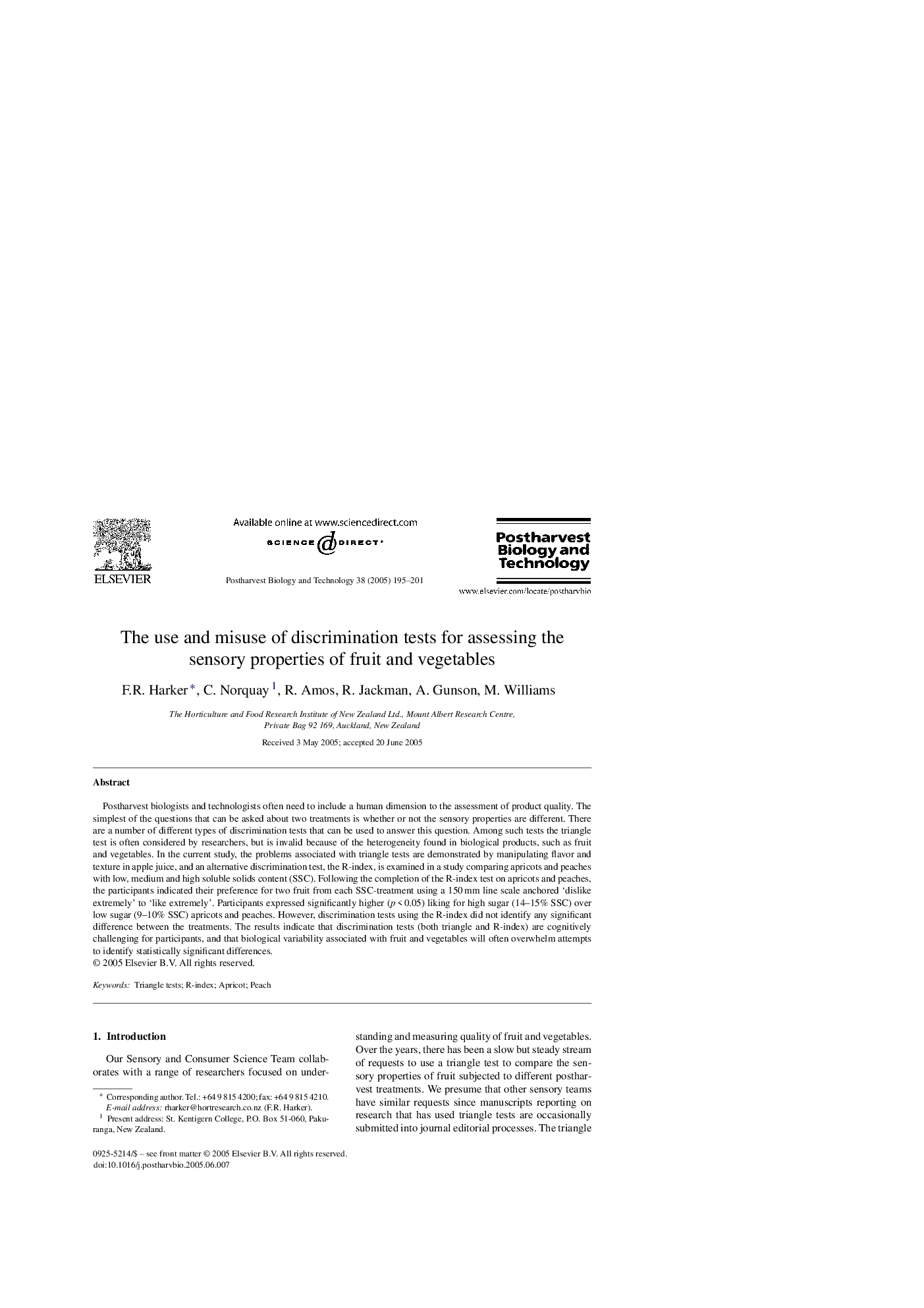| Article ID | Journal | Published Year | Pages | File Type |
|---|---|---|---|---|
| 9475097 | Postharvest Biology and Technology | 2005 | 7 Pages |
Abstract
Postharvest biologists and technologists often need to include a human dimension to the assessment of product quality. The simplest of the questions that can be asked about two treatments is whether or not the sensory properties are different. There are a number of different types of discrimination tests that can be used to answer this question. Among such tests the triangle test is often considered by researchers, but is invalid because of the heterogeneity found in biological products, such as fruit and vegetables. In the current study, the problems associated with triangle tests are demonstrated by manipulating flavor and texture in apple juice, and an alternative discrimination test, the R-index, is examined in a study comparing apricots and peaches with low, medium and high soluble solids content (SSC). Following the completion of the R-index test on apricots and peaches, the participants indicated their preference for two fruit from each SSC-treatment using a 150 mm line scale anchored 'dislike extremely' to 'like extremely'. Participants expressed significantly higher (p < 0.05) liking for high sugar (14-15% SSC) over low sugar (9-10% SSC) apricots and peaches. However, discrimination tests using the R-index did not identify any significant difference between the treatments. The results indicate that discrimination tests (both triangle and R-index) are cognitively challenging for participants, and that biological variability associated with fruit and vegetables will often overwhelm attempts to identify statistically significant differences.
Related Topics
Life Sciences
Agricultural and Biological Sciences
Agronomy and Crop Science
Authors
F.R. Harker, C. Norquay, R. Amos, R. Jackman, A. Gunson, M. Williams,
